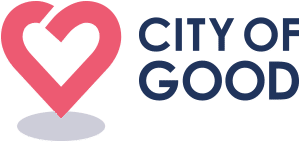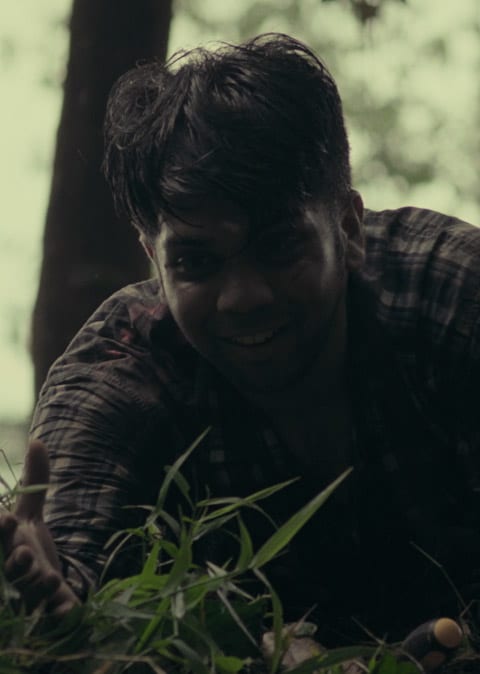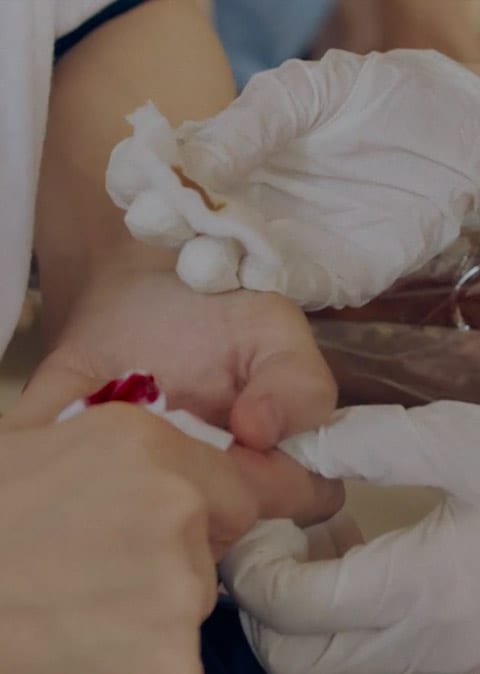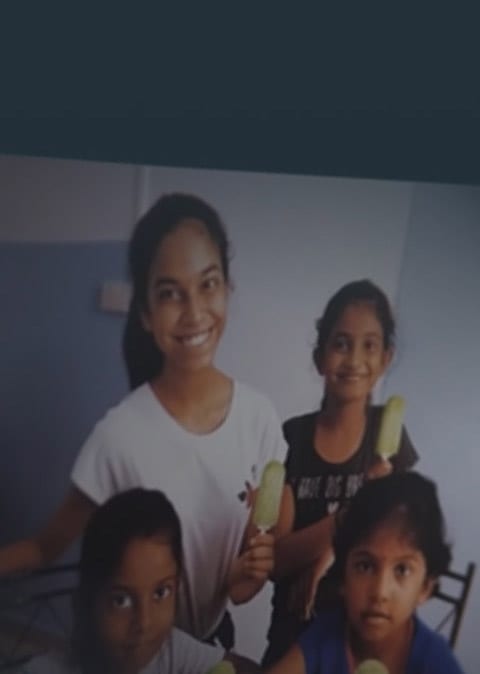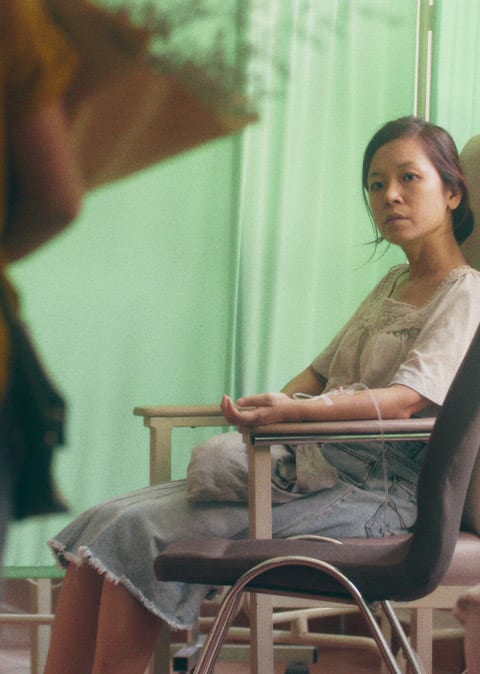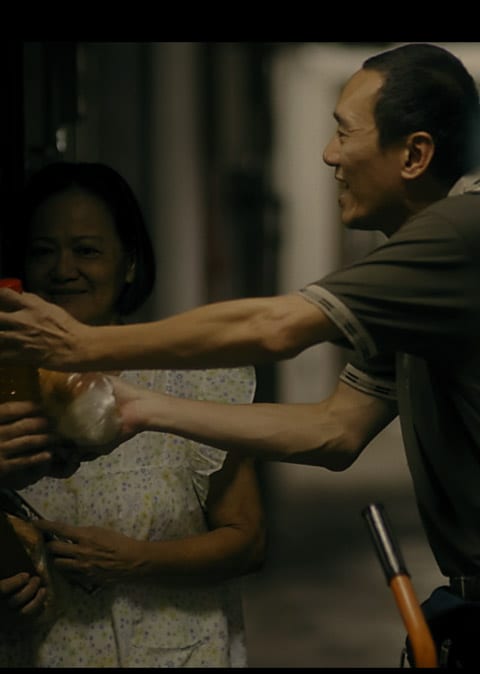The conventional narrative surrounding Lower-Income Families largely focuses on the resources they lack or the challenges they face. Even the “Lower-Income” term defines this demographic through the lens of insufficiency.
For the purpose of this article, we define Lower-Income Families as those who may not qualify for financial support, but are susceptible to shocks due to a lack of financial resources and support networks.[1]
Just as a reference, the following table shows gross income or per capita income as an eligibility criterion.
| Name of Initiative | Example of Income-Related Eligibility Criteria |
| ComCare Short-to-Medium-Term Assistance (SMTA)[2] | ≤ $650 per month per capita or total household income of ≤ $1.9k per month[3] |
| Medishield subsidies for lower-income households[4] | ≤ $1,200 per month per capita |
| Progressive wage model for full-time lower-wage workers[5] | ≤ $2,200 per month |
While it’s true that Lower-Income Families face greater challenges, such as societal stigma, educational disadvantages and limited employment opportunities, the prevailing narrative around their circumstances fails to accurately depict the complexity of their lives in a dignified manner.
We need to replace this narrative with one that highlights not only the difficulties surrounding Lower-Income Families, but also their strengths. This new narrative should shed light on how we can leverage the strengths of Lower-Income Families, and co-create solutions to uplift their situation.
As we redefine perspectives about Lower-Income Families, what can be told about their needs, their capacities, and the ideal society that gives them the value they deserve? How can society reframe Lower-Income Families from a strengths-based perspective?
Why do we need a new narrative for Lower-Income Families?
| The average living space for a child in a one or two-bedroom flat in Singapore is 10 sqm. That’s less than 60% living space than the average person, barely enough to fit a bed and desk.[6] | 10.4% of resident households in Singapore experienced food insecurity in the last 12 months.[7] | In 2022, wages for those earning less than SGD 2,500 only rose by 2.5%, but inflation continues to rise worldwide.[8] |
The numbers above show the typical situation for Lower-Income Families in Singapore – but it presents an incomplete picture, with figures too often focused on their unfortunate circumstances. There is a need for a more nuanced picture that fairly captures the impacts of living in poverty.
There is currently a society-wide perception of Lower-Income Families that sees them only by what they lack. This narrative limits their opportunities to better provide for themselves and their families.
For example, instead of offering opportunities that empower formerly incarcerated individuals to integrate themselves back into society, many employers will shy away from hiring them because of their history. Even their children’s education can be affected by this, with schools and peers seeing them, primarily, as the children of incarcerated parents and not simply as children who deserve a proper education.
“Stigma comes from a position of privilege and ignorance,” says Saleemah Ismail, Chief Executive Officer of New Life Stories. “This comes from the belief that they are better than the stigmatised and is not an indicator of strength. We are diverse and have different strengths – we should be celebrated not disdained for our differences.”
The strengths and resilience of Lower-Income Families
Lower-Income Families in Singapore come from diverse backgrounds and have experienced different circumstances that have led to their present situations.
“[Lower-Income] Families are labelled as such because they fall into a certain income bracket,” says Huixia See Toh, Director (Family Services) for AWWA. “But there are so many factors that have contributed to the family being in that situation and who they are.”
However, Lower-Income Families often display commendable strengths that usually go unseen.[9] Organisations that work with Lower-Income Families often observe a set of countervailing values that see them through persistent difficulties: generosity in the face of scarcity, resilience in the face of difficulty, and risk-taking against the odds, among others.
Generosity despite material scarcity
Saleemah explains that “our families live very simply and barely have enough to make ends meet. However, despite this, whenever New Life Stories volunteers or social workers visit their homes, they welcome them with open arms – some even preparing drinks for us.” It’s their way of welcoming a guest into their home; even if they aren’t able to offer a lot, they will offer what they can.
Saleemah goes on to share about how the children of a mother who was about to be incarcerated were “passed to a neighbour with no blood ties at all. The neighbour, who also has very low financial means, did not hesitate at all to care for the children.”
It’s the “kampung” (community) spirit, explains Saleemah, that’s really present in these individuals. “The rest of us in Singapore should learn from these families to measure happiness not by material wealth, the size of your flat, brand of your bag or clothes.”
We see families supporting other families in our community. One example is that of a child whose mother, for mental health reasons, was unable to bring her child to school every day. AWWA linked another family living in the block to the mother. The family was then the one who brought the child to school every morning instead, providing much needed support to the mother and child.
Resilience for their families
Lower-Income Families don’t shy away from difficult situations. In fact, they readily brave tough circumstances for the betterment of their families.
Some of the families that AWWA works with are transnational families– composed of individuals born in Singapore with spouses who were born in another country (i.e. permanent resident or non-resident status) and have moved into the country in search of better prospects. Huixia recalls how AWWA formed a transnational support group for mothers who were struggling to adapt.
“The culture is different, the language is different,” she says. And through the support group, “they can learn from each other, and they can leverage each other’s strengths and resources and provide emotional support.”

Risk-taking
Huixia also describes how some transnational families have come up with innovative ways to meet their financial needs, like starting a business. “They have resources from their home country, and they are very resourceful in that aspect,” she says.
Putting up your own business in a foreign country is daunting in itself. But doing so with various hurdles from the get-go – because of initial language and cultural differences – makes the task even more difficult.
“It takes a certain level of bravery to do that,” says Huixia. “They are willing to try out something. They might fail, but they will continue to be resilient and try. And I think these are quite amazing traits that we see in our families.
“That’s why we keep saying that our families are key in this. They have much to offer, and contribute. And we want to recognise and leverage the resources that they have.”
Strengths-based programmes for Lower-Income Families
The non-profit sector represents many of the key players behind the effort to change the national narrative about Lower-Income Families.
The individuals and organisations working in Singapore’s non-profit sector seek to co-create a society where Lower-Income Families have access to a comprehensive network of support and are recognised for their inherent strengths as well. Reflecting Singapore’s diverse culture, our non-profit organisations (NPOs) use a variety of approaches to contribute to the overall effort.
“We can’t do it alone. It’s really an ecosystem. When we work together, we can harness efficiency and strengthen effectiveness.”
Huixia See Toh, Director, AWWA
AWWA’s inclusive support for the young and vulnerable
AWWA takes a broad approach – their multi-professional team supports early childhood education, and the community integration of children with developmental needs, families with complex social issues, the elderly, and persons with additional needs so that they may live out their aspirations.
For example, their Kindle Garden Preschool is Singapore’s first inclusive preschool and provides children with all abilities with equal access to quality early childhood experiences and a common curriculum. Unlike other preschools, Kindle Garden’s purpose-built facilities and differentiated learning plans, enable children from low-income households, and those diagnosed with additional needs like Cerebral Palsy, Down syndrome and autism, to embrace diversity and thrive alongside typically developing children in a common environment.
New Life Stories’ helping hand for the incarcerated and their families
New Life Stories, on the other hand, focuses on the prevention of intergenerational incarceration, reaching out to the children and families of incarcerated Singaporeans with the necessary resources to enable high self-efficacy. Their Family Strengthening Programme creates a system of support for the children of incarcerated parents; case workers and therapists provide the parents with guidance and support during their time in incarceration, and their subsequent reintegration into society.
While trained volunteers from the programme support the children, therapists give the parents support in self-awareness and communication to help them rebuild their relationship with their children.
The programme also includes Family Joint Visits, where the parents send messages of support and recordings of them reading stories to their kids.
An ecosystem of support for Lower-Income Families
AWWA’s and New Life Stories’ individual approaches focus on leveraging the strengths of the families they work with. AWWA makes use of their clients’ innate resilience, and helps them build lives and be part of the community using this knowledge. New Life Stories, on the other hand, focuses on rebuilding and maintaining bonds between families, paying special attention to the parents’ bond with their children, and using that to build positive outcomes for both.
It’s not a handout system, where they just provide monetary needs to the families. They find the root cause of the problem, such as the lack of support for children with additional needs or the lack of interaction for incarcerated parents, and begin addressing supporting the families from there.
“We can’t do it alone — it’s really an ecosystem,” says AWWA’s Huixia. “We need to recognise that we bring different things to the table. When we work together, we can harness efficiency and strengthen effectiveness.”
By working as partners instead of patrons, NPOs help Lower-Income Families leverage their own unique strengths. “[We’re] not here to direct how they should be living their lives, but to understand where they’re coming from and partner with them,” Huixia adds.
“We cannot just support the child, provide counselling or play therapy to the child, without supporting the entire family – caregivers parents in prison or their siblings, because they all live under the same roof,” Saleemah shares.
“Is there a way for us to consolidate resources, look at needs holistically, and consequently grow stronger as a society because we have all this in place?”
Wrightia Wahid, Assistant Director, Strategy and Communications & Stakeholder Engagement, AWWA
Beyond providing access and care to Lower-Income Families through these programmes, NPOs also serve as a gateway through which volunteers can participate in efforts to provide better services to these members of society.
By volunteering, individuals can take part in the broader goal of making society more open and inclusive.
Help co-create an inclusive society that recognises each group’s strengths
Lower-Income Families have unique strengths that society often fails to recognise. They deserve equal respect and should be treated as partners towards creating a better society. This is the reality that NPOs strive to keep in mind as they work with Lower-Income Families.
NPOs can change the narrative that society has conceived for Lower-Income Families, but only if Lower-Income Families are regarded as equal partners in creating an environment of inclusion. In any solution conceived for them, Lower-Income Families’ voices should be at the centre of all conversations, and an active force in their implementation.[10]
This remains a work in progress — but progress looks hopeful. “There are many agencies who value impactful work and meaningful outcomes,” says Wrightia of AWWA. “Additionally, there are many individuals who also wish to do good work. But is there a way for us to consolidate resources, look at needs holistically, and then, as a society, grow stronger because we have [all these resources] in place?”
Visit AWWA’s and New Life Stories’ campaign pages to contribute to their cause, or visit the Solution Spaces from NVPC’s Lower-Income Families Colabs to find out how you can leverage your strengths to help Singapore’s Lower-Income Families.
This piece is part of a series of three articles that delve into insights gained from the Lower-Income Families Colabs series run by NVPC from 2022 to 2023.
[1] “Who Are Lower-Income Families?”, National Volunteer And Philanthropy Centre, 2023, https://cityofgood.sg/colabs-sg/lower-income-families-colabs/who-are-lower-income-families/
[2] “Comcare Short-to-Medium-Term Assistance,” Ministry of Social and Family Development, accessed March 23, 2023.
[3] Even if applicant’s income exceeds these guidelines, they can still approach a Social Service Office for assessment if they face financial difficulties. The SSOs will assess their circumstances and needs, and assist them accordingly.
[4] “Medishield Life Premiums and Subsidies.” Ministry of Health, accessed May 15, 2023.
[5] “Progressive Wage Moves from 1 Sep,” Ministry of Manpower Singapore, September 31, 2022.
[6]Justin Ong, “Budget debate: Singapore must wage war on poverty if it wants to be a truly First World country: Leon Perera”, The Straits Times, 2 March 2022, https://www.straitstimes.com/singapore/politics/singapore-must-wage-war-on-poverty-if-it-wants-to-be-a-truly-first-world-country-leon-perera
[7] Tania Nagpaul et al., “The hunger report: An in-depth look at food insecurity in Singapore”, Singapore Management University, August 2020, https://foodbank.sg/wp-content/uploads/2022/03/The-hunger-report_-An-in-depth-look-at-food-insecurity-in-Singapo.pdf
[8] Charmaine David, “Singaporeans with low incomes continue to face the lowest wage growth, DBS says”, CNBC, 2 August 2022, https://www.cnbc.com/2022/08/03/singaporeans-with-low-incomes-continue-to-face-lowest-wage-growth-dbs.html
[9] “Insights and Opportunities”, National Volunteer And Philanthropy Centre, 2023, https://cityofgood.sg/colabs-sg/lower-income-families-colabs/insights-and-opportunities/#Insight-1
[10]“A Vision for the Future”, National Volunteer And Philanthropy Centre, 2023, https://cityofgood.sg/colabs-sg/lower-income-families-colabs/vision-for-the-future/
